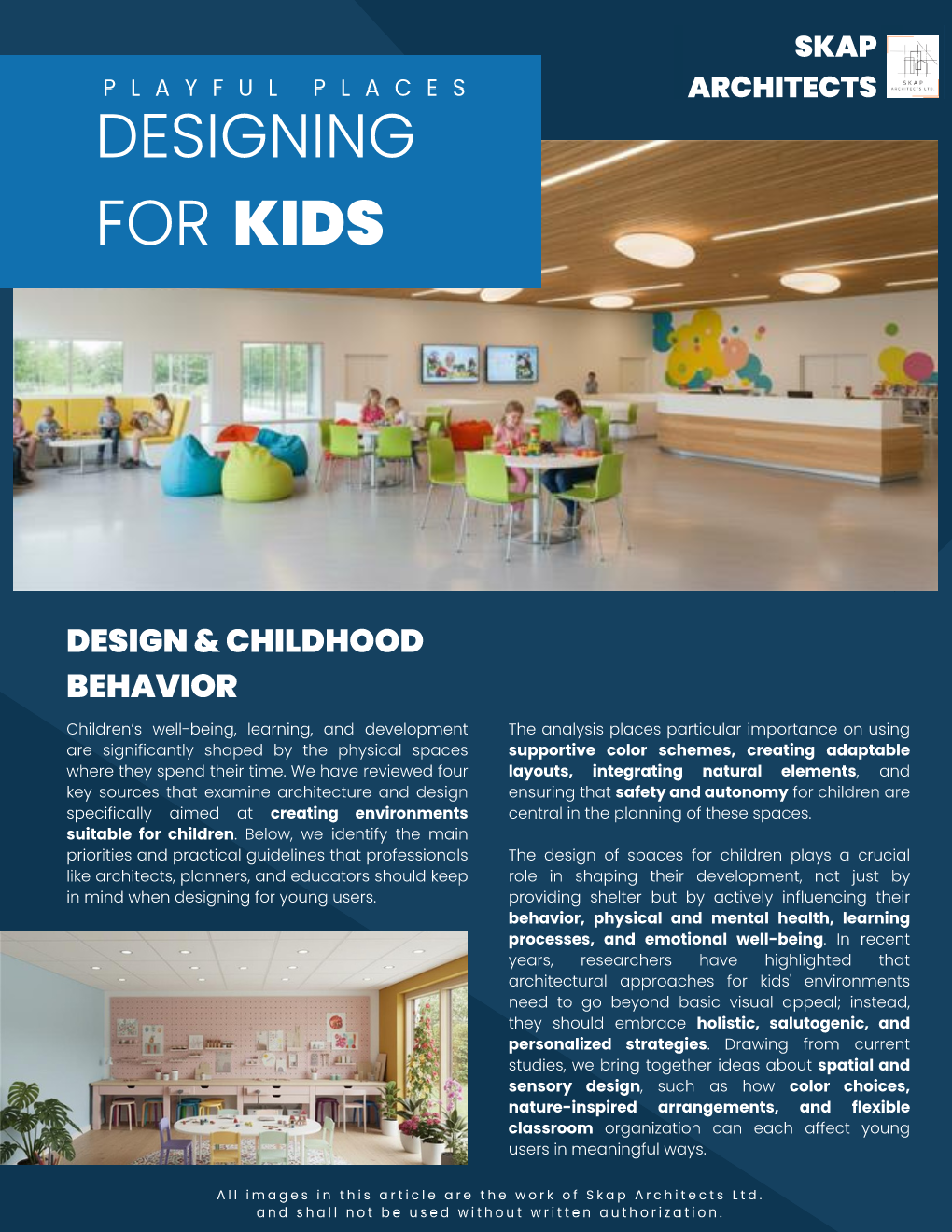Playful Places - Designing For Kids
Children’s well-being, learning, and development are significantly shaped by the physical spaces where they spend their time. In this article, we have reviewed four key sources that examine architecture and design specifically aimed at creating environments suitable for children. By considering approaches such as holistic health principles, color psychology, salutogenic design, and spatial organization focused on play. This article identifies the main priorities and practical guidelines that professionals like architects, planners, and educators should keep in mind when designing for young users. The analysis places particular importance on using supportive color schemes, creating adaptable layouts, integrating natural elements, and ensuring that safety and autonomy for children are central in the planning of these spaces.
10/7/20251 min read


DESIGN & CHILDHOOD BEHAVIOR
Children’s well-being, learning, and development are significantly shaped by the physical spaces
where they spend their time. We have reviewed four key sources that examine architecture and design
specifically aimed at creating environments suitable for children. Below, we identify the main
priorities and practical guidelines that professionals like architects, planners, and educators should keep in mind when designing for young users.
The analysis places particular importance on using supportive color schemes, creating adaptable
layouts, integrating natural elements, and ensuring that safety and autonomy for children are
central in the planning of these spaces. The design of spaces for children plays a crucial
role in shaping their development, not just by providing shelter but by actively influencing their
behavior, physical and mental health, learning processes, and emotional well-being. In recent
years, researchers have highlighted that architectural approaches for kids' environments
need to go beyond basic visual appeal; instead, they should embrace holistic, salutogenic, and
personalized strategies. Drawing from current studies, we bring together ideas about spatial and
sensory design, such as how color choices, nature-inspired arrangements, and flexible
classroom organization can each affect young users in meaningful ways.
COPYRIGHT © 2024 SKAP ARCHITECTS LTD.
SKAP Architects Ltd.
Licensed architecture firm in Ontario specializing in unlocking your property's development potential through efficiency and innovation.
Core Services
Site Feasibility Studies
Development Potential Analysis
Building Design & Permitting
Interior Design
Investment Proformas
Contact
(416) 878-6559
info@skaparchitects.com
24hr Response Guaranteed